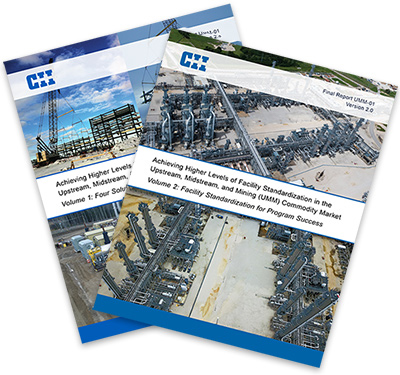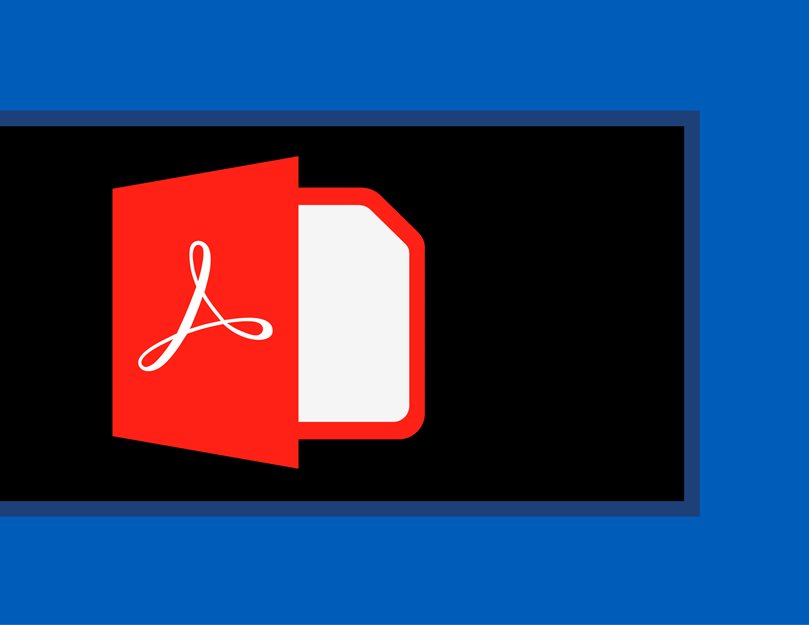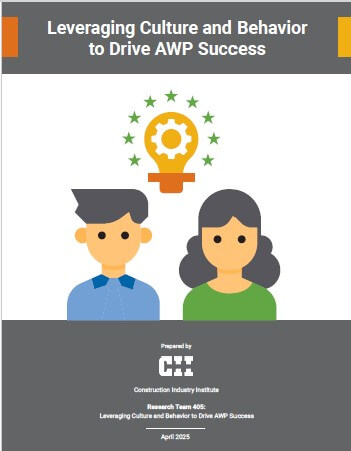
Achieving Higher Levels of Facility Standardization in the UMM Commodity Market, Version 2.0
In Version 1.0 of this report, Research Team UMM-01 (RT-UMM-01) described the cost and schedule advantages that come with facility standardization. The team identified ways to facilitate the widespread use of standard designs by applying four solution pieces:
- Economics of Standardization
- Standardization Decision-making Model
- Critical Success Factors (CSFs) and Enablers
- Innovative Technologies and Approaches
While the benefits of applying a standardization strategy to industrial projects can vary, the industry – and especially the Upstream, Midstream, and Mining (UMM) sector – has been slow to achieve high levels of standardization. To help achieve more effective use of standardization, the industrial sector of the capital projects industry needs additional guidance on the benefits of standardization.
In Version 2.0 of this report, RT-UMM-01 presented additional resources to promote facility standardization:
- The Standardization Business Case Analysis Model analyzes and justifies standardization.
- The Standardization Work Process shows practitioners how to effectively exploit the benefits of standardization and lays out the major considerations throughout the project phases.
- During this phase of research, RT-UMM-01 validated the Standardization Critical Success Factors (CSFs) it had identified in the first phase. The team’s ongoing work evaluated how completely industry currently is accomplishing the CSFs (based on real-life projects) and considered how the CSFs associate with project performance.
In summary, RT-UMM-01 encourages industry members to pay attention to the six solution pieces to better understand and recognize the value of standardization, and to exploit the benefits of achieving higher levels of facility standardization, especially in the UMM sector. With the two volumes of this report and its four associated Excel tools, the team has provided user-friendly deliverables to help practitioners achieve higher levels of facility standardization.
- Modularization
- Intelligent Automated Data Collection Technology
- Construction Simulation Technologies
- Mobile User Interface Device
- Wireless Networks for Construction Sites
- LIDAR/Reality Capture
RT-UMM-01 also developed several user-friendly tools to help with the implementation of the solution pieces, and to support practitioners in achieving higher levels of facility standardization.
from Volume 1:- List of Innovative Technologies and Management Approaches for Facility Standardization
- Standardization Decision-Making Model (Excel tool)
- Facility Standardization Work Process Guidebook and RACI Matrix
- Standardization Business Case Analysis Model and Tool (Excel tool)
- Standardization Critical Success Factors (CSF) Accomplishment Status Checking Tool (Excel tool)
- Standardization Work Process Checklist (Excel tool)
RT-UMM-01 developed a Standardization Business Case Analysis Model that can help practitioners become familiar with pertinent standardization factors and analyze, as well as justify, facility standardization by estimating overall program costs and schedule savings, utilizing the facility standardization approach. RT-UMM-01 further developed a standardization business case analysis tool from the model in Excel to provide a user-friendly tool that is designed to be iterative and flexible. This tool can be used in conjunction with the standardization decision-making model.
RT-UMM-01 developed a standardization work process that provided a user-friendly tool to support the development of a program of standardized projects; guides practitioners on how to effectively exploit standardization benefits; and lays out the major considerations throughout project phases. The work process identifies individual tasks for each project phase and provides guidance on each task, along with the parties responsible for executing each task.


